| s/y Nine of Cups Yellowstone National Park, Wyoming May 2012 |
| More National Parks? More American Odyssey trip? Roadside Americana? Birds of North America? Wildflowers of North America? |
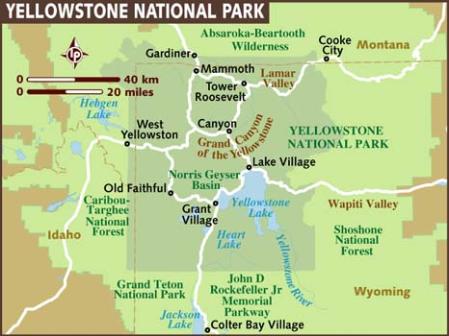
| Yellowstone National Park is the world's first national park. Established by the U.S. Congress and signed into law by President Ulysses S. Grant in 1872, the park is located primarily in Wyoming, although it also extends into Montana and Idaho. Known for its wildlife and many geothermal features, especially Old Faithful Geyser, the park encompasses 2.2 million acres, comprised of lakes, canyons, rivers and mountain ranges and includes many types of ecosystems, although the sub-alpine forest is dominant. The park is the centerpiece of the Greater Yellowstone Ecosystem, the largest remaining, nearly intact ecosystem in the Earth's northern temperate zone. |
| At, 7,732' above sea level, Yellowstone Lake is the largest high-elevation lake in North America. Its deep blue waters are encircled by 141 miles of tree-lined shore. The lake is centered over the Yellowstone Caldera, the largest active super-volcano on the continent. It has erupted with tremendous force several times in the last two million years. |
| The number of thermal features in Yellowstone is estimated at 10,000 and 200 to 250 geysers erupt in Yellowstone each year, making it the place with the highest concentration of active geysers in the world, thanks to its location in an ancient active caldera. |
| The Fountain Paint Pot was an interesting phenomenon which did indeed resemble a thick paint bubbling and gurgling. The heat was palpable despite the cool morning temps. |
| We entered Yellowstone National Park via the small Montana tourist town of West Yellowstone. We did our usual sussing out of park in advance, stopped by the Visitor Center for maps and info, did a little internet research and then began our exploration. Our first day was spent heading south to the geysers with a visit to Old Faithful and completing the circuit loop along the shores Yellowstone Lake and the north and south rims of the Grand Canyon of Yellowstone. Day 2 involved getting up at 0330 to get the best glimpse of animals in the Lamar Valley area and then heading back to Mammoth Hot Springs with a quick jaunt north to Gardiner and after a stop at the Norris Geyser Basin, back to West Yellowstone. Day 3 retraced our steps a bit as we headed south and over the Continental Divide to adjoining Grand Teton NP over the scenic John D. Rockefeller, Jr Memorial Parkway. |
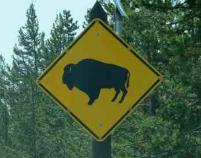
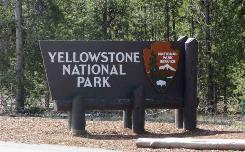
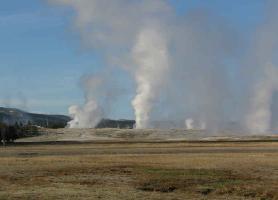
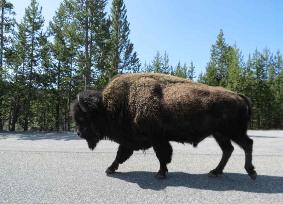
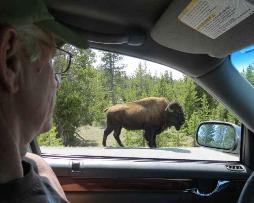
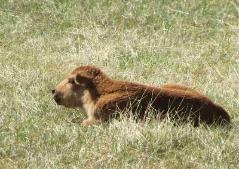
| Yellowstone's American bison population is estimated to be ~3,700. |
| We were barely inside the park boundaries when we began seeing buffalo...technically American bison...a herd of them. |
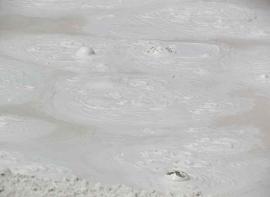
| We could see the fumeroles from a long distance, steaming in the cool morning air as we approached the Lower Geyser Basin. The smell of sulphur was strong as we walked up the long boardwalks above the barren, crusty earth. The Great Fountain geyser alternately steamed and spurted. The steam became so thick, we could neither breathe nor see a thing. |
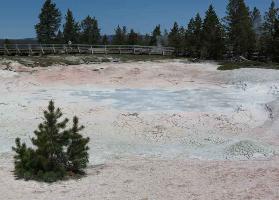
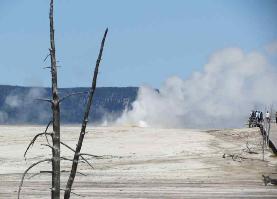
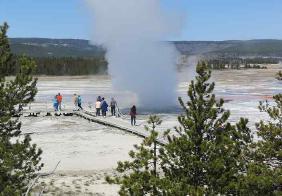
| Famously hot features... Mudpots - acidic hot springs with limited water supply. The differing colors are derived from oxidation states of the iron in the mud. The bubbling is caused by rising gases in the mud. Fumaroles - the hottest geothermal features in the park are vents of steam released through fissures in the earth. Travertine terraces are found where the interactions of water and limestone create chalk-white travertine such as those found at Mammoth Hot Springs. Geysers are hot springs with clogged, underground plumbing. Usually near the surface, the clog or constriction causes a build-up of pressure until it's finally released in spurts of boiling water. |
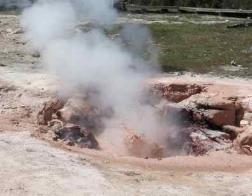
| The Red Spouter churned and boiled as we watched. |
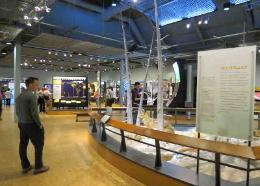
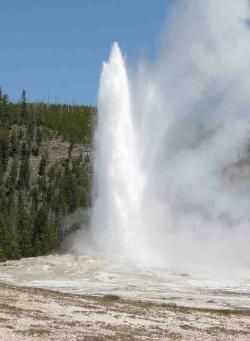
| The photos shown on this page are just a mere representation of the nearly 1,000 pix we took while visiting Yellowstone. It would be easy to spend a week or a month here and each day would still be a new adventure. It's an incredible, dynamic place and we're thrilled to have been able to visit. If you wanted to pick a national park that represents the beauty and majesty of America, this would be the place to start. WOW! |
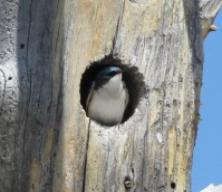
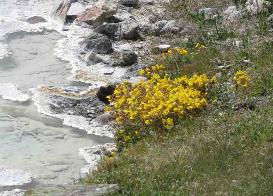
| Despite the heat and acidity, flowers bloom (yellow monkeyflowers) and birds thrive. That's a tree swallow peeking out from his hole in a long dead, but still standing lodgepole pine. |
| The Old Faithful Visitor Center provided lots of info on the ecosystems and geothermal features of the park. |
| Old Faithful, true to its name, erupted like clockwork to the delight of the crowd. |
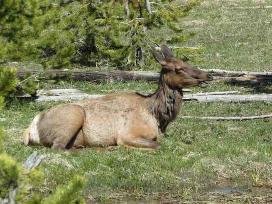
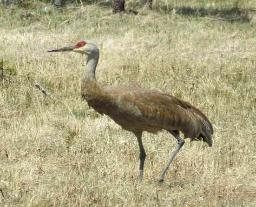
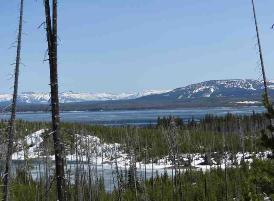
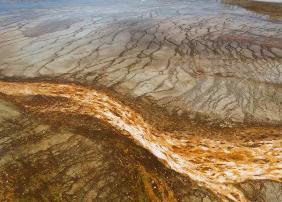
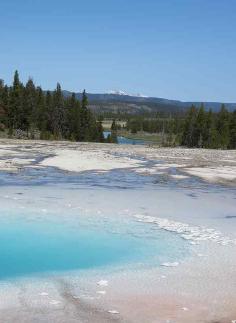
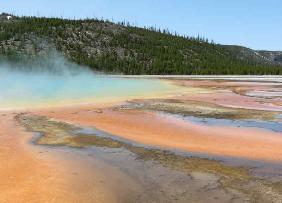
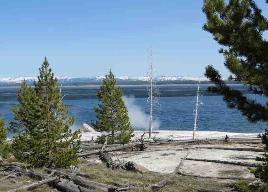
| Yellowstone's largest hot spring is Grand Prismatic Spring. The deep-blue color of the pool contrasted to the rings of yellow and orange thermophiles (organisms that thrive at relatively high temperatures) surrounding it produce the prismatic effect. A close-up of the thermophiles (right) |
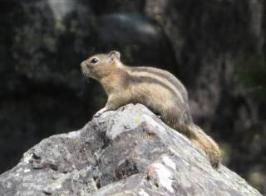
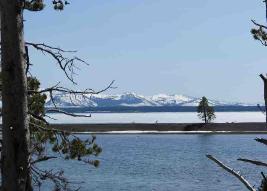
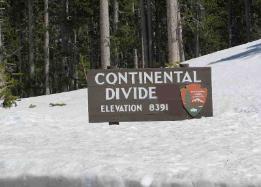
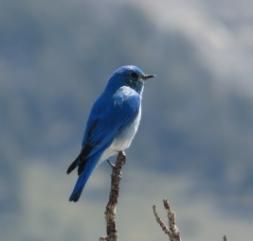
| Above, a mountain bluebird was just as beautiful as the Prismatic Spring view. |
| An elk rests in a meadow. We spotted several sandhill cranes in the park. A golden mantled ground squirrel poses on a rock top for us. |
| Yellowstone National Park is home to 7 species of conifers, 1,000 species of native vascular plants, 67 species of mammals and more than 320 species of birds. |
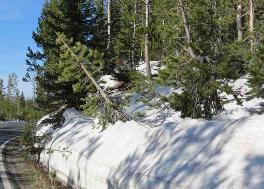
| We crossed the Continental Divide where lots of snow still remained. |
| View of Yellowstone Lake |
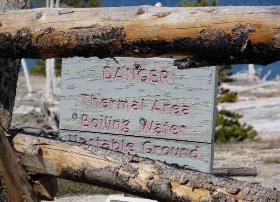
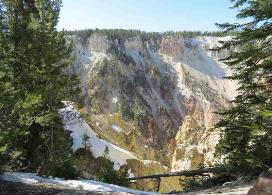
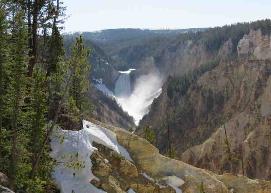
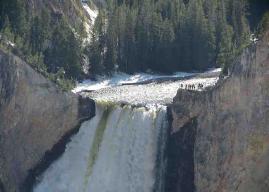
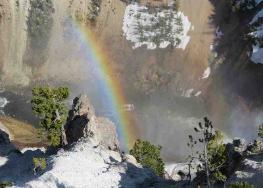
| As we descended from the higher elevations to the lake level, the view of the lake were superb. The lake itself is interesting because though skim ice remained on its surface, geysers and steam continued to vent on its shore and we could see the small streams bubbling with of boiling water as they emptied into the lake. |
| We drove from the lake to the Grand Canyon of the Yellowstone for most spectacular scenery and vistas. The turbulent Yellowstone River roars and foams for over 20 miles through the canyon area. Rugged pinnacles and sheer canyon walls, still adorned with traces of snow, were astounding. We viewed the canyon from both the north and south rims. The Lower Falls shown are 308'. The view from Lookout Point was the most impressive because of the perpetual rainbow which seems to appear here over the water. |
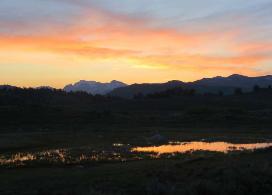
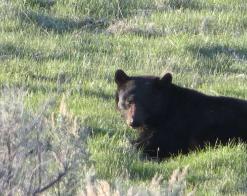
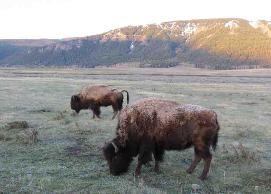
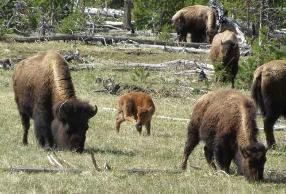
| We rose at 0330 one morning in order to view early morning animals in the Lamar Valley about 2 hours away. We saw several elk, their eyes reflecting in the lights. The sunrise was beautiful, but did little to warm the near freezing morning temps. We did see one black bear, but no grizzlies. We thought we spotted a wolf, but it turned out to be a coyote. Nevertheless, it was a terrific morning. Lots of buffalo grazed, their young protected midst the herd. Shy antelope grazed in the distance. |
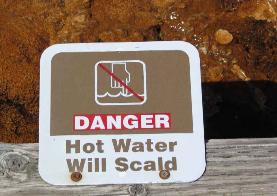
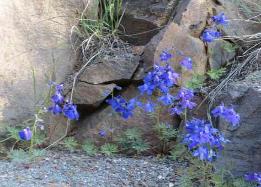
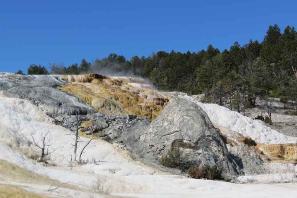
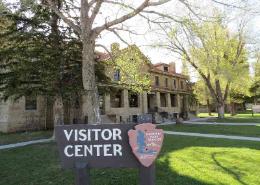
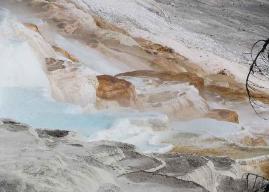
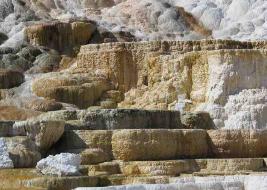
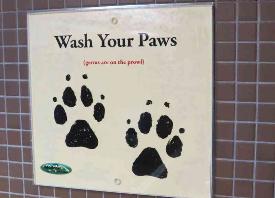
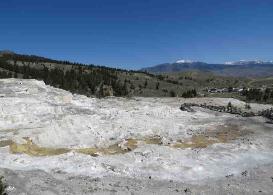
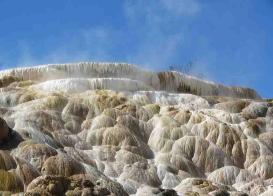
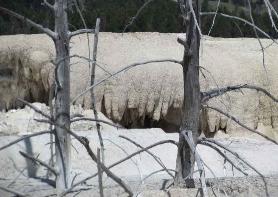
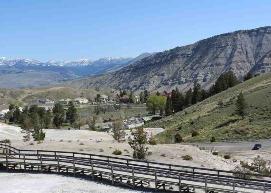
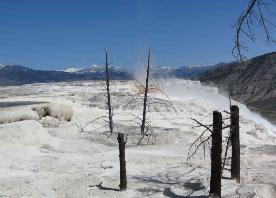
| Vibrant larkspur peek out from a rocky crevice. The Visitor Center at Mammoth Hot Spring, now a national landmark, was originally part of Fort Yellowstone. We got a kick out of the sign in the lavatories (yup, the camera goes everywhere). A view of the Visitor Center and other buildings which comprise the Mammoth Hot Springs complex. |
| Mammoth Hot Spring Terraces combine natural grace and beauty. Mineral-laden steaming water finds its way to the surface and builds tier upon tier of cascading terraced travertine stone. It was created over thousands of years as hot water from the spring cooled and deposited calcium carbonate (limestone) ... over two tons flow into Mammoth each day in a solution. |
| More views of Mammoth Hot Springs as we ascended higher and higher from the valley. |
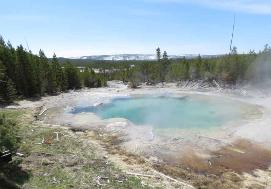
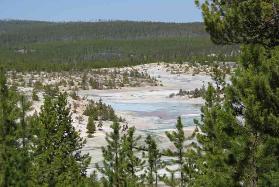
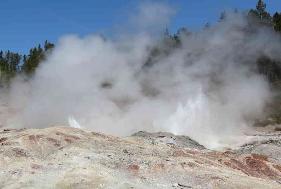
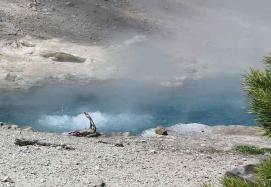
| The Norris and Firehole River Geyser Basins were just south of Mammoth. Left, Steam rising from Emerald Spring, named for its vivid blue-green color. As beautiful as it was, the steam and bubbling water kept us at bay and on the boardwalks. Steamboat Geyser is the largest of the geysers in this area and can reach 300-400' in height when it erupts. A scenic view from above. |
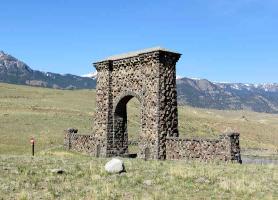
| The Roosevelt Arch stands at the North Entrance to the Park at Gardiner, MT. The arch's cornerstone was laid down by Theodore Roosevelt in 1903. The top of the arch is inscribed with a quote from the Organic Act of 1872, the legislation which created Yellowstone, which reads "For the Benefit and Enjoyment of the People." |
We're heading to Grand Teton National
Park next. It's just down the road. Why
not come along?
Park next. It's just down the road. Why
not come along?